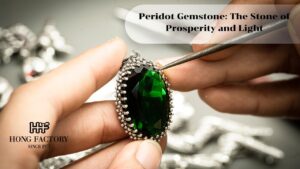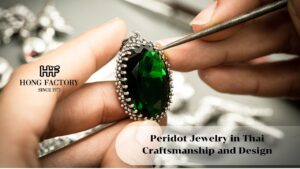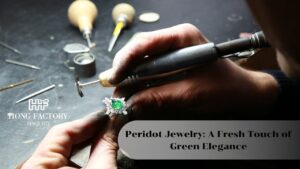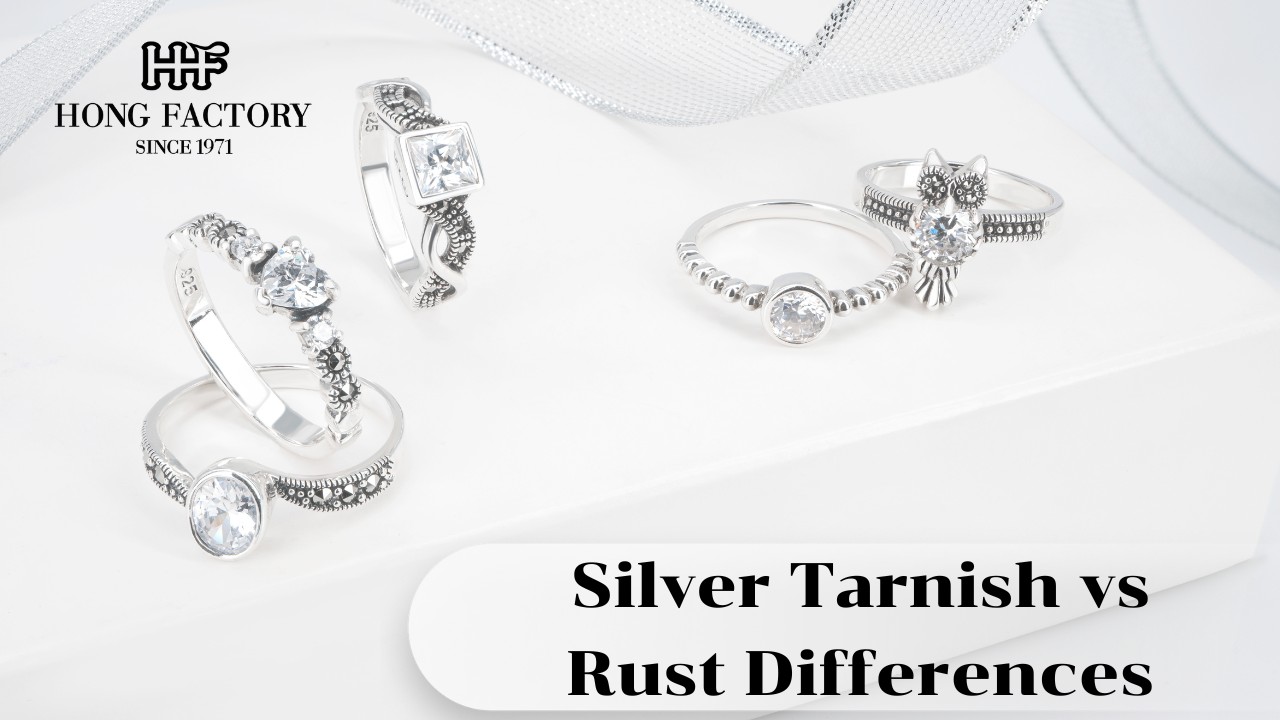
Silver and iron are two widely used metals with distinct properties, but both are prone to changes when exposed to air and moisture. One develops tarnish, the other rust. Understanding the differences between Silver tarnish and rust helps consumers maintain jewelry, cutlery, or metal objects properly.
This article explains the causes, characteristics, and prevention methods of tarnish and rust. Jewellery wholesale thailand
What is Silver Tarnish?
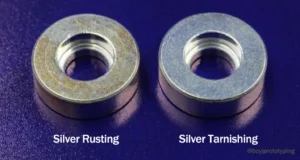
Tarnish is the thin, dull layer that forms on silver when it reacts with sulfur compounds in the air. Instead of breaking down the metal, tarnish is simply a surface discoloration. Its main qualities include:
- A black, gray, or yellowish film on the surface
- Caused by reaction with sulfur and oxygen, not by structural decay
- Can be cleaned and polished away
- Does not destroy the underlying silver
This makes tarnish more of a cosmetic issue than a structural one.
Silver Tarnish vs Rust Differences
Silver tarnish perception
When people hear Silver tarnish, they may think it is similar to rust. However, the two are quite different. Tarnish is a surface reaction that does not compromise the structural integrity of the metal, while rust is a destructive process that weakens iron. Key differences include:
- Cause: Tarnish is caused by sulfur, while rust is caused by oxygen and moisture.
- Appearance: Tarnish looks black or dull, while rust appears reddish-brown and flaky.
- Impact: Tarnish can be removed without damage; rust eats into the metal.
These differences explain why tarnish is reversible while rust is often permanent.
What is Rust?
Rust occurs when iron reacts with oxygen and moisture, creating iron oxide. Its properties include:
- A reddish-brown flaky layer
- Weakens the metal over time
- Can spread and cause structural failure
- Difficult to completely remove without damaging the object
Rust is far more destructive than tarnish, which is why iron requires protective coatings like paint or plating.
Preventing Silver Tarnish
To reduce tarnish on silver items:
- Store in anti-tarnish cloths or bags
- Clean regularly with a silver polishing cloth
- Avoid exposure to sulfur-rich environments (e.g., rubber bands, eggs, or pollution)
- Wear silver jewelry often, as use helps slow tarnish buildup
These steps help maintain silver’s brilliance.
Preventing Rust
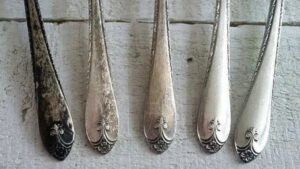
Rust prevention requires protecting iron from oxygen and moisture:
- Apply protective coatings like paint, oil, or galvanization
- Store in dry, moisture-free environments
- Regularly inspect and clean surfaces
- Use stainless steel when possible for added resistance
These practices ensure iron objects last longer and stay strong.
Similarities Between Tarnish and Rust
Despite their differences, tarnish and rust share some similarities:
- Both are chemical reactions caused by environmental exposure
- Both alter the surface appearance of the metal
- Both require maintenance to prevent buildup
However, tarnish is superficial and reversible, while rust is deep and destructive.
Pros and Cons of Silver Tarnish
Pros:
- Does not destroy the silver
- Easily removable with proper cleaning
- May even be used decoratively in antiqued finishes
Cons:
- Dulls the beauty of silver
- Requires frequent maintenance
Pros and Cons of Rust
Pros:
- None for structural use; in rare cases, rust is appreciated for industrial or rustic aesthetics
Cons:
- Destroys the metal over time
- Difficult to repair once advanced
- Requires constant prevention efforts
While both Silver tarnish and rust result from reactions between metals and their environments, their effects are vastly different. Tarnish is a removable layer that affects only appearance, while rust is a destructive process that compromises strength. Understanding these differences helps consumers care for their metals properly preserving silver’s shine and protecting iron from decay.

